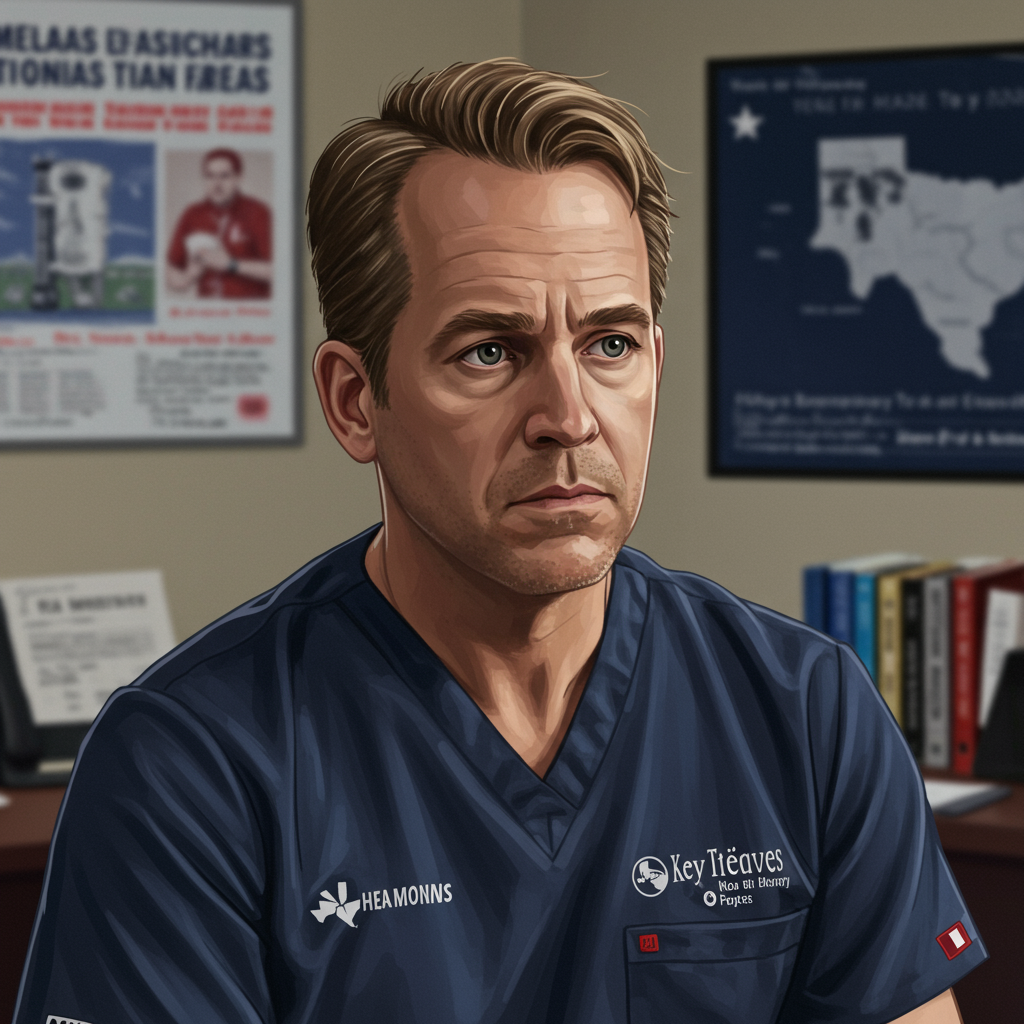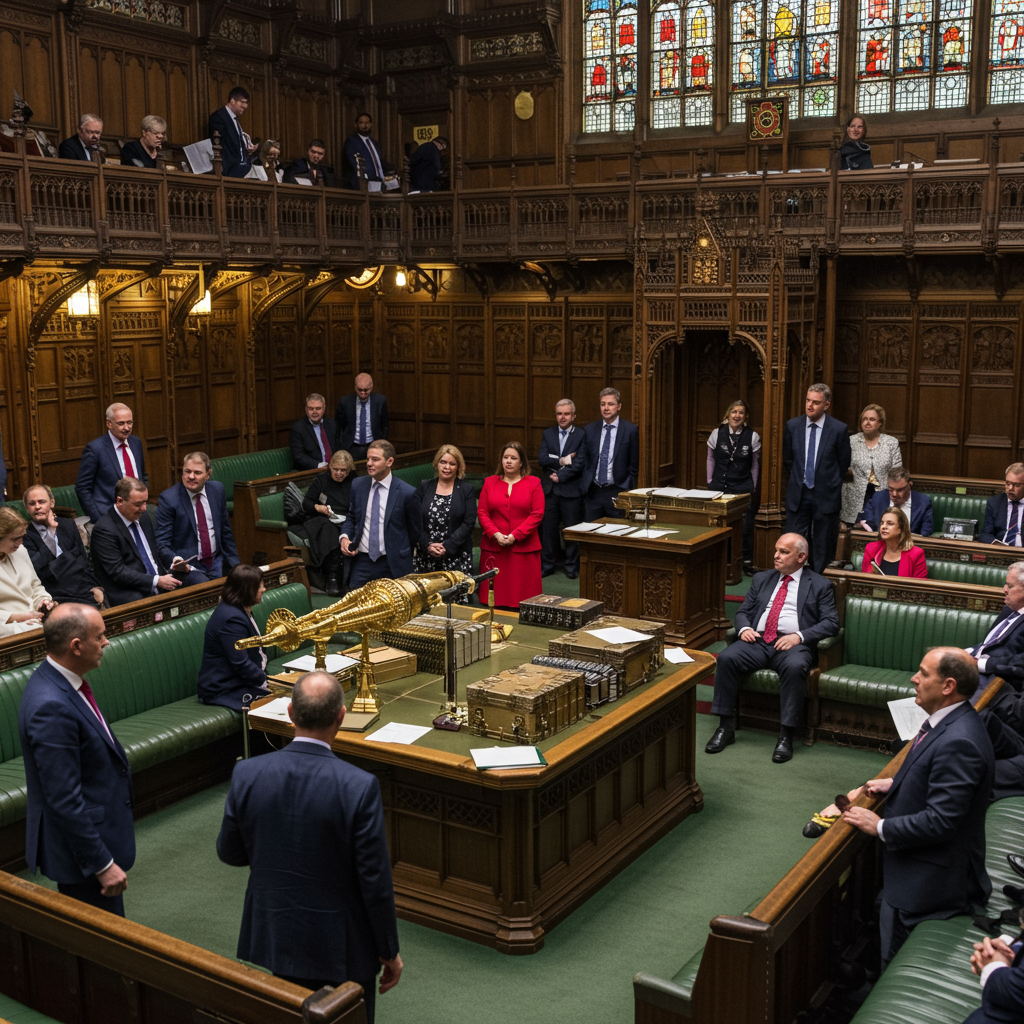NEWS
NATION
Measles Outbreak Hits Texas Family: “I Feel Like I’ve Been Lied To”
A chiropractor’s personal struggle and his family’s severe illness highlight the devastating return of a preventable disease as vaccination rates decline.
By [Rewritten Author Name – typically removed or kept generic in this scenario]
BROWNFIELD, Texas – Kiley Timmons, a chiropractor practicing in a remote area of west Texas, served as a crucial healthcare point for his community of 8,500. For over ten years, Kiley, 48, attended to dozens of patients daily at his small clinic, addressing a range of ailments from aches to more serious concerns, often referring complex cases to physicians or offering prayers.
However, in early spring, Kiley began seeing unfamiliar symptoms: persistent aches, fevers resistant to breaking, and puzzling discolored skin patches. Initially attributing it to a severe flu season, the symptoms escalated and multiplied. By late March, a significant portion of his patients reported relatives struggling to breathe. Soon after, Kiley developed a cough himself.
While his wife, Carrollyn, recovered from a COVID-19 infection, Kiley’s symptoms worsened. He sought medical help in April, undergoing a viral panel which returned negative results. Given a major measles outbreak circulating within a nearby Mennonite community, his doctor tested for measles despite Kiley being vaccinated years prior.
The Disease Takes Hold
Kiley’s condition deteriorated rapidly. “I feel like I’m dying,” he texted a friend, unable to keep down food or water and losing ten pounds. His chest went numb, arms tingled, and oxygen levels dropped dangerously low. The diagnosis confirmed his fears: “Positive for measles,” he messaged his sister in mid-April. “Just miserable. I can’t believe this.”
Measles, a disease declared eliminated in the United States 25 years ago, has made a harrowing comeback. This Texas outbreak, originating in a Mennonite church, quickly grew into one of the largest seen in a generation, spreading through communities with declining vaccination rates. This resurgence mirrors a concerning national trend, pushing the U.S. towards a potential epidemic not witnessed in decades. Health officials tracked over 1,200 confirmed cases and countless exposures across more than 30 states. Tragically, this outbreak saw three deaths, all unvaccinated children – a stark increase from the total of three measles deaths in the U.S. in the 22 years prior to 2025.
What struck Kiley was the severe nature of the illness. Measles is far from benign; about 1 in 5 unvaccinated individuals with measles require hospitalization. Complications are common, including secondary pneumonia infections in 1 in 20 children, and tragically, death in over 1 in 1,000 cases. It’s a highly contagious virus; an infected person can spread it in a space for up to two hours after leaving, and roughly 90% of unvaccinated exposed individuals will contract it. Experts warn that few other infectious diseases lead to such high hospitalization rates (10-20%) among unvaccinated people.
Kiley’s clinic appealed to some patients skeptical of conventional medicine. A sign in his office read, “The doctor of the future will give no medicine.” As his fever spiked to 104 degrees, he confided in his wife, “I feel like I’ve been lied to.”
He attempted to manage his severe symptoms at home using supplements like cod liver oil and vitamin D, endorsed by figures like Robert F. Kennedy Jr., a prominent vaccine skeptic. To protect his four children, he isolated himself in the living room.
One morning, a week into his illness, Carrollyn found Kiley on the couch, his head nearly purple, a rash blooming across his chest, and his mouth dotted with white sores (Koplik spots). His oxygen level was a dangerous 85%. She rushed him to the emergency room, where he was quarantined, given oxygen, breathing treatments, and monitored for severe stomach cramps. He spent 40 grueling hours in isolation before receiving a message from Carrollyn: “Update on the kids… Three of them have fevers.”
A Family’s Vaccination Decision
For over a decade, Kiley and Carrollyn had debated vaccinating their children against measles, mumps, and rubella using the MMR vaccine. Each time, they chose not to.
The MMR vaccine is widely considered safe and 97% effective with two doses by the FDA. For generations, it was recommended by credible U.S. health officials as a basic societal obligation, leading to the effective elimination of measles transmission within the country as nearly all parents consented to the recommended doses. However, this success inadvertently meant measles became an abstraction for many, its dangers forgotten by new parents who had no personal experience with the devastating disease that infected millions, hospitalized tens of thousands, and killed hundreds annually before widespread vaccination.
The decision against vaccination was influenced by fears of rare adverse reactions, amplified by a persistent, though disproven, link between the MMR vaccine and autism stemming from a retracted 1998 study. This misinformation, promoted by figures like RFK Jr., contributed to declining vaccination rates even before the COVID-19 pandemic further eroded trust in public health institutions. Carrollyn also harbored concerns rooted in her siblings’ history of febrile seizures after vaccination, scary but ultimately harmless convulsions. “My children won’t see this disease in their lifetimes,” she concluded. “The vaccine would probably be fine, but why take an unnecessary risk?”
Concerned by the growing outbreak in nearby Gaines County, Carrollyn took precautions, avoiding grocery stores with the children and stocking up on immune supplements. The vaccination discussion arose again, but they reached the same conclusion, believing their young, healthy children might still avoid the illness.
Severity Hits Home
Their hopes were dashed. Arden, 9, developed a fever that lasted 13 days. Garner, 12, began vomiting. By the time Kiley was discharged from the hospital, the 14-year-old twins, Hudson and Tucker, were also falling ill.
Hudson’s condition became critical on Easter weekend, his oxygen levels crashing. Carrollyn called 911, accompanying Hudson in an ambulance on the 45-minute drive to Lubbock. Eventually, all four children were admitted to the hospital and quarantined due to the highly contagious nature of the disease.
It took three days for the children to stabilize enough to return home, but the ordeal left lingering effects. Kiley suffered temporary hair loss, brain fog, and short-term memory deficits. The children endured cluster headaches, followed by a new wave of symptoms like eye sores, muscle aches, and colds from what seemed like subsequent viral infections. Kiley’s research revealed a potential cause: measles can cause “immune amnesia,” essentially wiping the body’s memory for previous infections and leaving it vulnerable to other illnesses for months or even years. This complication is a significant risk often overlooked in discussions about the disease’s severity.
The Public Health Divide
The outbreak also illuminated a growing divide in public health perspectives. Dr. Ben Edwards, a physician in rural Texas who had previously vaccinated hundreds of children, underwent a shift in his views around 2011. He began questioning mainstream medicine, believing diseases stemmed from poor lifestyle choices and that the body could heal itself with nutrition, hydration, movement, and spiritual peace. Moving to Lubbock, he opened Veritas Medical (Latin for truth), selling supplements and hosting a podcast, “You’re the Cure,” where he often featured guests skeptical of vaccine safety.
His practice attracted patients disillusioned with conventional healthcare, including some from the nearby Mennonite community. In early March, one patient, Tina Siemens, called Edwards, asking him to attend the viewing of her child who had died from measles complications – the first U.S. measles death in over a decade.
Edwards drove to the small church outside Seminole, Texas, finding a 6-year-old girl in a coffin and her four young siblings nearby, flushed with fevers, rashes, and coughs. Fearing the hospital where their sister died, the parents sought alternative support. With no antiviral treatment for measles, Edwards offered supportive care like hydration, immune supplements, and vitamin A-rich cod liver oil (sometimes recommended by the WHO). He stayed, observing many other unvaccinated children with symptoms attending the viewing.
Over the next weeks, Edwards visited homes, caring for an estimated 300 people with measles, continuing even after experiencing a mild breakthrough infection himself. Throughout this, his podcast promoted views that minimized measles danger and highlighted perceived risks of vaccines, despite the overwhelming evidence that the MMR vaccine is the only effective “firewall” against the disease. “The body’s designed to kill measles,” Edwards asserted as the outbreak expanded across state lines. “Seek a higher authority, a spiritual authority, and let peace guide you,” he advised as cases climbed. “Don’t be scared of anything,” he urged, even as reported cases surpassed 1,000, predominantly among the unvaccinated, reaching states like North Dakota for the first time in 14 years.
Consequences of Declining Immunity
The spread of measles is directly tied to declining vaccination rates. Measles stops circulating when about 95% of a community is immune (herd immunity). While national rates for children have slipped below 92%, parts of west Texas have seen rates drop below 80%, creating fertile ground for outbreaks. The increasing number of “conscientious exemptions” in school districts reflects a growing segment of the population opting out of required vaccinations.
The current situation is precarious. Experts warn that if the entire unvaccinated U.S. population (estimated at 23.5 million) were exposed, millions could be hospitalized and tens of thousands could die over several years, with potential lifelong complications for survivors. The risk is particularly high for the 22 million immunocompromised Americans.
Despite the challenges in messaging and trust, public health experts agree that raising vaccination rates is the critical solution. In recent outbreaks, 96% of infected individuals were unvaccinated or had unknown vaccination status. Catch-up vaccination campaigns remain highly effective, even during an outbreak, serving as the vital firewall against a devastating, yet preventable, disease making a dangerous comeback. The personal story of Kiley Timmons and his family serves as a powerful and painful illustration of the consequences when this firewall is breached.




